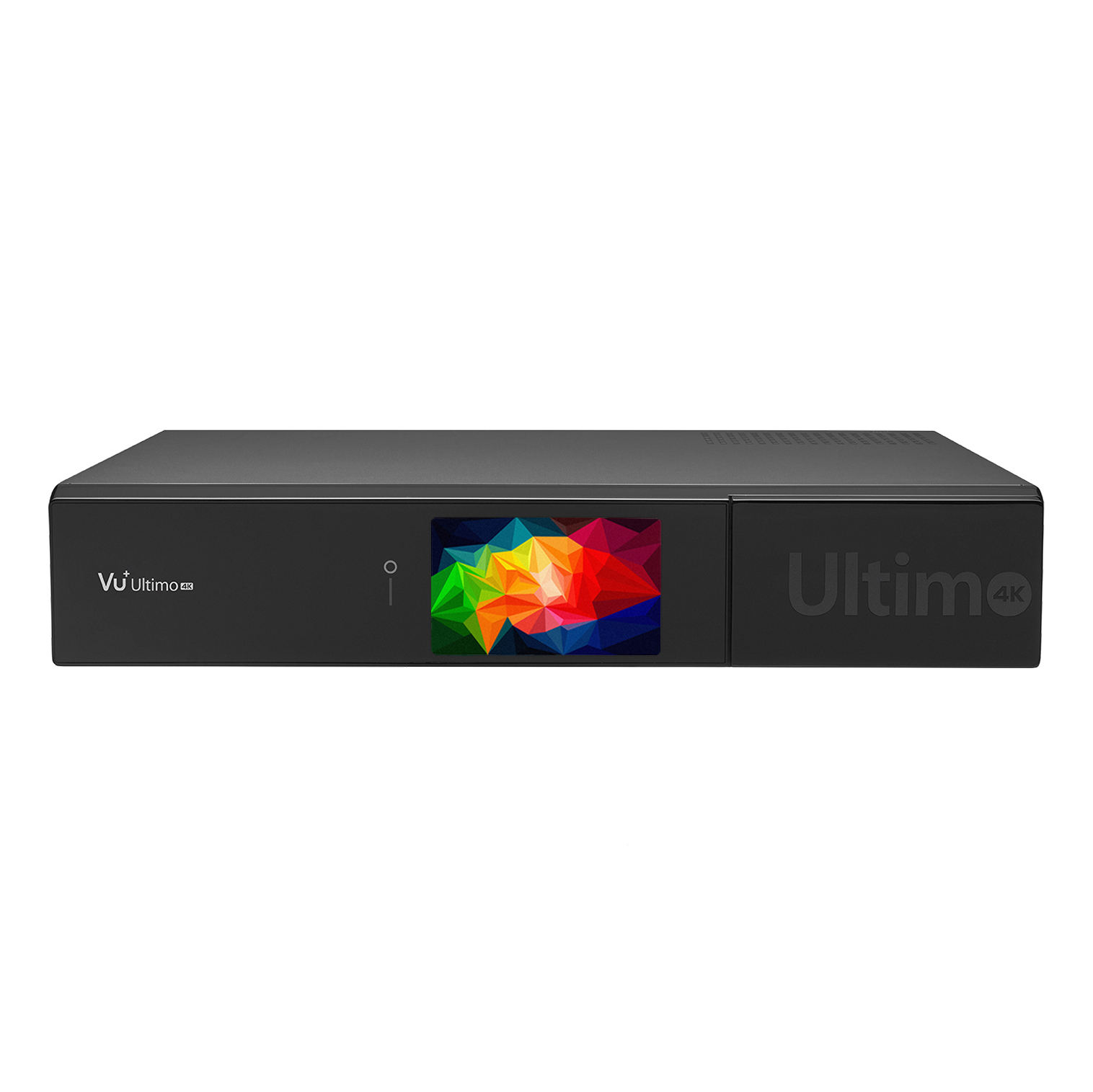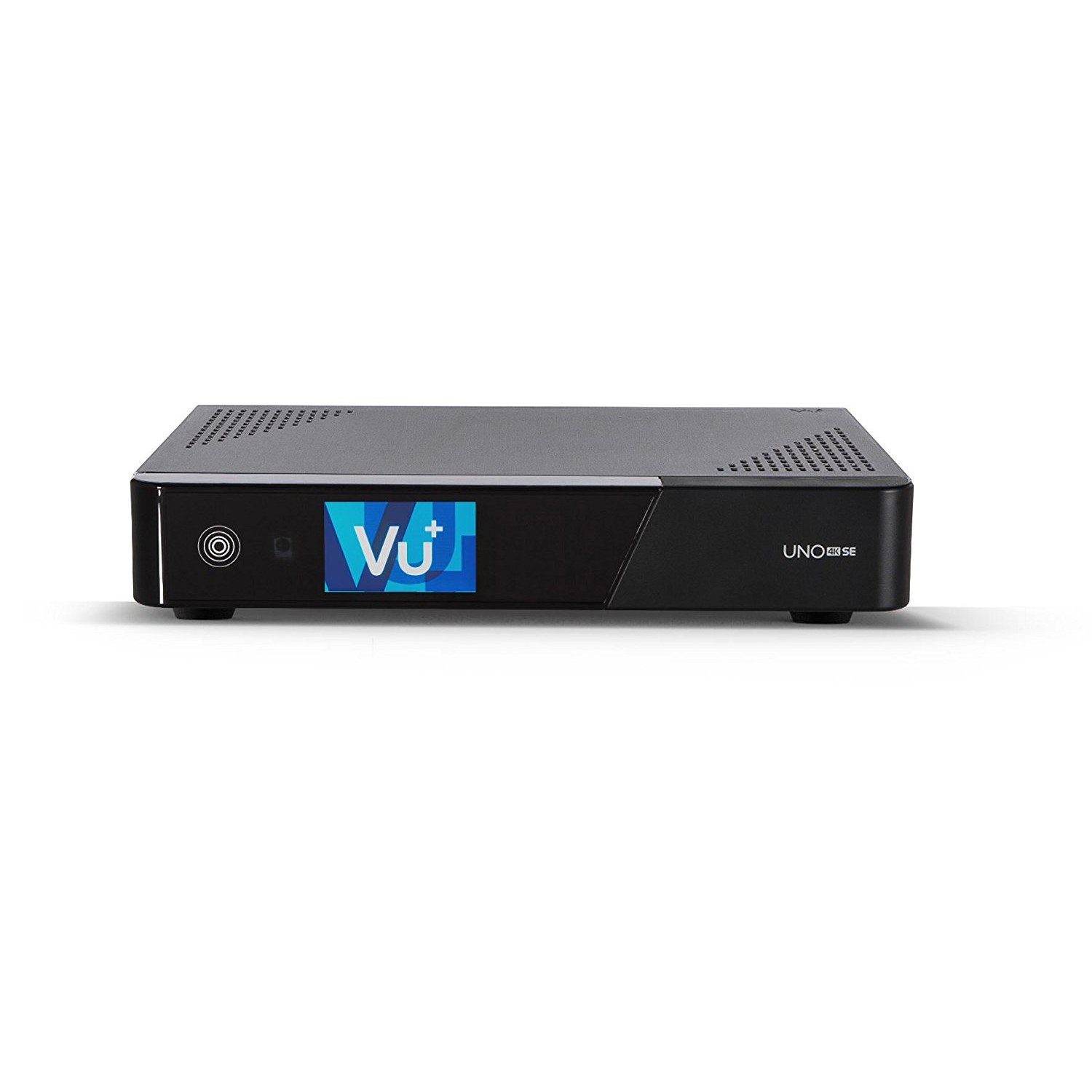
VU + Uno 4K SE Linux UHD set top box
Digital satellite receiver for UHD and HD TV and radio programs.
At the heart of the VU + Uno 4K SE is the 2x 1,700 MHz ARM DualCore processor. Experience UltraHighDefinition (UHD) TV with the VU + Uno 4K SE set-top box.
What is a DVB-S2X FBC Twin Tuner?
A DVB-S2 FBC Twin Tuner has 8 demodulators.
With two conventional (eg twin LNB) satellite feeders, the tuner is comparable to 2 conventional and 6 additional tuners operating in loop-through mode. You can watch, stream or record simultaneously stations from 8 different transponders from 2 different Sat levels.
In SCR operation (Unicable) with 8 frequencies, this corresponds to 8 conventional tuners.
What is a DVB-C FBC tuner?
A DVB-C FBC tuner has 8 demodulators. This corresponds to a receiver with 8 conventional DVB-C tuners.
You can watch, stream or record 8 channels at the same time.
Key Features:
- Very fast switching times
- 2.4 “TFT LCD Display – MiniTV
- WebKit Browser
- HD transcoding
- HbbTV
- HDMI 2.0 output
- HDMI 2.0 input
- Gigabit LAN
- 1x tuner slot for eg DVB-S2 / DVB-C Full Band Capture (FBC) tuner
- Plug & Play removable frame for 2.5 “SATA HDDs (maximum 10.5mm HDD height)
- USB 3.0
- ARM CPU (2x 1,700 MHz)
- eMMC flash memory
- HVEC / H.265 video decoding
- External 12V power supply
Technical Highlights:
- 1,700 MHz ARM DualCore processor
- 4096 MB Flash (eMMC)
- 2048 MB of DDR3 DRAM
- Gigabit LAN (10/100/1000 Mbps)
- 2.4 “TFT LCD display
- 1x DVB Common-Interface slot
- 1x smartcard reader (Xcrypt)
- 2x USB 3.0 (back)
- Plug & Play removable frame for 2.5 “SATA HDDs (maximum 10.5mm HDD height)
- S / PDIF audio output optical (digital)
- 1x HDMI 2.0 video / audio output (digital)
- 1x HDMI 2.0 input (digital)
- unlimited channel list for TV and radio
- EPG (Electronic Program Guide) support
- Support of bouquet lists (favorites lists)
- OSD in many languages
- UI appearance versatile (skin support)
- Expandable with many free plugins (apps)
- automatic / manual channel search
- DiSEqC 1.0 / 1.1 / 1.2, USALS
- SCR / CSS (EN50494 & EN50607)
- External 12 volt power supply
- power switch
- RS232 – service interface
- Free apps available for iOS and Android
Video decoding:
- Video compression HVEC / H.265, MPEG-2 / H.264 and MPEG-1 compatible
- Video standard PAL G / 25 Hz, NTSC
- Picture format 4: 3/16: 9
- Letterbox for 4: 3 TV sets
Output Digital:
- Sampling frequencies 32 kHz, 44.1 kHz, 48 kHz
- S / PDIF output optical (AC3)
- Audio encoding:
- Audio compression MPEG-1 & MPEG-2 Layer I and II, MP3
- Audio Mode Dual (main / sub), stereo
- Sampling frequencies 32 kHz, 44.1 kHz, 48 kHz, 16 kHz, 22.05 kHz, 24 kHz
power consumption:
- <13W (in operation, with LNB)
- <12W (in operation, without LNB)
- <0.5W (deep standby mode)
External power supply:
- Input: 110 – 240V AC / 50 – 60Hz / 1.0A
- Output: 12V = / 3.0A
General:
- Ambient temperature + 15 ° C … + 35 ° C
- Humidity <80%
- Dimensions (W x D x H): 280 mm x 222 mm x 50 mm
- Weight: 1.4 kg
Package includes:
- 1x VU + Uno 4K SE UHD Receiver
- 1x remote control
- 1x quick manual (german / english)
- 1x external IR receiver
- 1x HDMI cable
- 2x batteries (AA)
- 1x power supply (110-240V / 12V)
NOTE: Features listed here may require additional and/or periodic firmware updates. We are not responsible for third party firmware and features, addons, patches, softcams, plugins or third party services and the availability of such services on this receiver (such as YouTube, etc.). Your warranty covers receiver hardware only and is not extended to software updates or setup, we may however extend this at our discretion to offer support for FTA (free to air) reception where the service provider permits connection to their network. Further details can be found in our Terms and Conditions HERE.
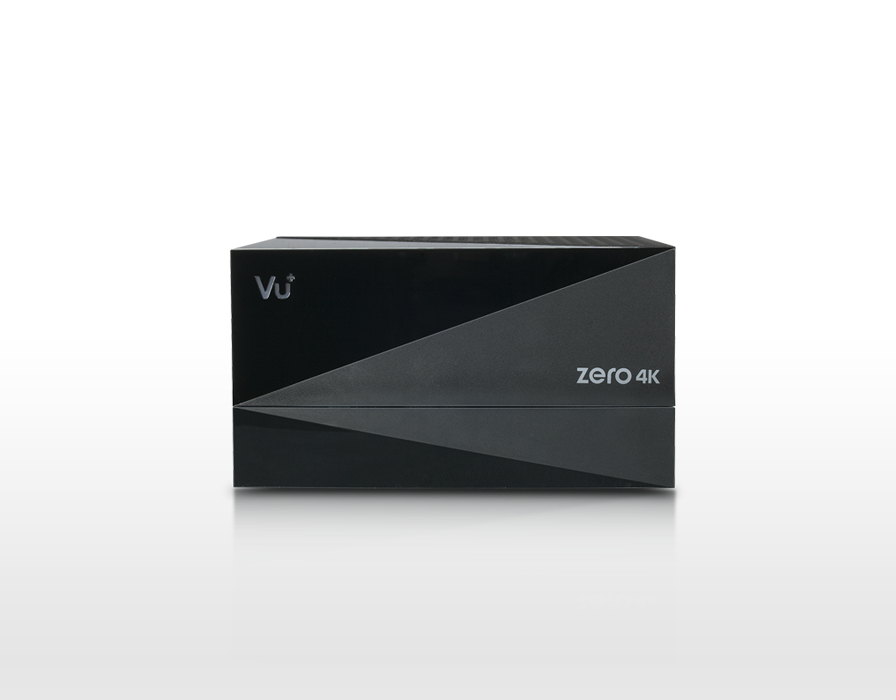
VU+ Zero 4K 1x DVB-S2X Multistream tuner Linux UHD set-top box
Digital satellite receiver for UHD and HD TV and radio programs.
The heart of the VU+ Zero 4K is the 2x 1.500 MHz ARM DualCore processor. Experience UltraHighDefinition (UHD) TV with the VU+ Zero 4K set-top box.
Key Features:
- Very fast switching times
- WebKit Browser
- HbbTV
- HDMI 2.0 output
- 1x tuner DVB-S2X
- 1x USB 2.0
- ARM CPU (2x 1,500 MHz)
- eMMC flash memory
- HVEC / H.265 video decoding
- External 12V power supply
Technical Highlights:
- 1,500 MHz ARM DualCore processor
- 4096 MB Flash (eMMC)
- 2048 MB of DDR3 DRAM
- LAN (10/100 MBit / s)
- 1x DVB Common-Interface slot
- 1x smartcard reader (Xcrypt)
- 1x USB 2.0 (back)
- S / PDIF audio output optical (digital)
- 1x HDMI 2.0 video / audio output (digital)
- unlimited channel list for TV and radio
- EPG (Electronic Program Guide) support
- Support of bouquet lists (favorites lists)
- OSD in many languages
- UI appearance versatile (skin support)
- Expandable with many free plugins (apps)
- automatic / manual channel search
- DiSEqC 1.0 / 1.1 / 1.2, USALS
- SCR / CSS (EN50494 & EN50607)
- External 12 volt power supply
- power switch
- RS232 – service interface
- Free apps available for iOS and Android
Video decoding:
- Video compression HVEC / H.265, MPEG-2 / H.264 and MPEG-1 compatible
- Video standard PAL G / 25 Hz, NTSC
- Picture format 4: 3/16: 9
- Letterbox for 4: 3 TV sets
Output Digital:
- Sampling frequencies 32 kHz, 44.1 kHz, 48 kHz
- S / PDIF output optical (AC3)
- Audio encoding:
- Audio compression MPEG-1 & MPEG-2 Layer I and II, MP3
- Audio Mode Dual (main / sub), stereo
- Sampling frequencies 32 kHz, 44.1 kHz, 48 kHz, 16 kHz, 22.05 kHz, 24 kHz
power consumption:
<10W (in operation, with LNB)
<9 W (in operation, without LNB)
<0.5W (deep standby mode)
External power supply:
- Input: 110 – 240V AC / 50 – 60Hz / 0.7A
- Output: 12V = / 2.0A
General:
- Ambient temperature + 15 ° C … + 35 ° C
- Humidity <80%
- Dimensions (W x D x H): 140 mm x 115 mm x 50 mm
- Weight: 0.6 kg
Delivery:
- 1x VU + Zero 4K DVB-S2X 1x DVB-S2X Multistream Tuner UHD Receiver
- 1x remote control
- 1x Quick manual (German / English / Spanish / Dutch / French / Italian)
- 1x external IR receiver
- 1x HDMI cable
- 2x batteries (AAA)
- 1x power supply (110-240V / 12V)
NOTE: Features listed here may require additional and/or periodic firmware updates. We are not responsible for third party firmware and features, addons, patches, softcams, plugins or third party services and the availability of such services on this receiver (such as YouTube, etc.). Your warranty covers receiver hardware only and is not extended to software updates or setup, we may however extend this at our discretion to offer support for FTA (free to air) reception where the service provider permits connection to their network.
Further details can be found in our Terms and Conditions HERE.

Model: heavy
Stroke Length: 36″
Speed: 5,2mm/sec
Resolution(Reed): 32 Pulse/inch
Input Voltage 36 VDC

Model: regular
Stroke Length: 18″
Speed: 5,6mm/sec
Resolution(Reed): 48 Pulse/inch
Input Voltage 36 VDC

Model: regular
Stroke Length: 24″
Speed: 5,6mm/sec
Resolution(Reed): 48 Pulse/inch
Input Voltage 36 VDC

Model: heavy
Stroke Length: 24″
Speed: 5,2mm/sec
Resolution(Reed): 32 Pulse/inch
Input Voltage 36 VDC
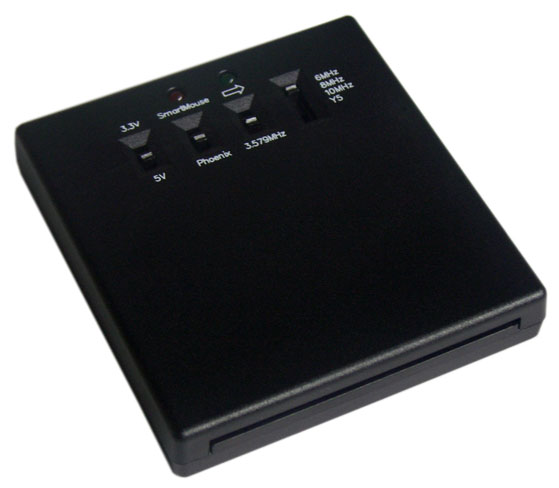
- Power of the Smart Card via a selectable switch. (3.3V and 5V)
- Smart Mouse USB Programmer for the Phoenix / Smart Mouse mode with 3.58,
6.00, 8.00, 10.00 and 12.00MHZ dip-switch.
- Phoenix or Smart Mouse mode selectable with a dip-switch.
- FTDI chipset (the drivers are already included in most Linux or Windows
applications included)
- 2 LED indicators for card activity (traffic)
- Power and programming via USB. (there is no need for external power
supply).
- Mini USB cable is supplied.
- Suitable as an external card reader for the Dreambox, D-Box, Fritz Box and
other Linux and Windows applications.
What is Phoenix, Smartmouse?
There are today numerous software’s on the internet that are used to
communicate with different types of smartcards that follows ISO7816(T=0)
standard such as WinExplorer.
Common for these programs are that they need a
Phoenix- or a Smartmouse-interface to communicate with the smartcard.
The
interface (really a very simple construction, it was originally created by
hobbyists who wanted to communicate with smartcards) transform the signal
to/from the serialport of the computer to levels that the smartcard can
handle.
Then an oscillator is provided to the card so it can handle the
commands sent to it.Normally a oscillator at 3.579575MHz are used because the
ISO7816-standard originally uses a speed that is “oscillator” divided with 372
that gives approx. 9600 bps.
The difference between Phoenix and Smartmouse is
the polarity on the reset-signal.
WEEE-Reg.-Nr. DE 71415134
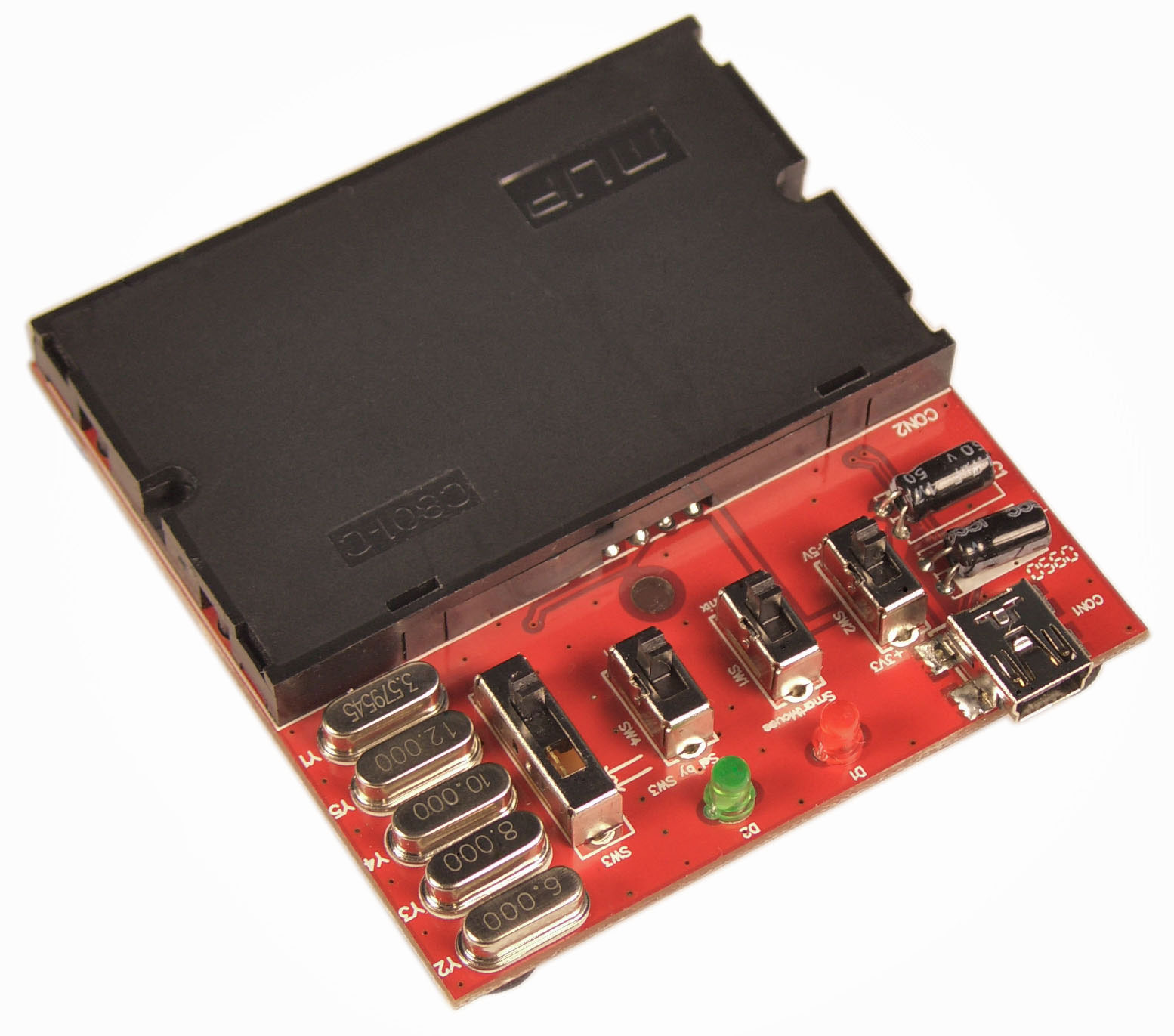
- Power of the Smart Card via a selectable switch. (3.3V and 5V)
- Smart Mouse USB Programmer for the Phoenix / Smart Mouse mode with 3.58,
6.00, 8.00, 10.00 and 12.00MHZ dip-switch.
- Phoenix or Smart Mouse mode selectable with a dip-switch.
- FTDI chipset (the drivers are already included in most Linux or Windows
applications included)
- 2 LED indicators for card activity (traffic)
- Power and programming via USB. (there is no need for external power
supply).
- Mini USB cable is supplied.
- Suitable as an external card reader for the Dreambox, D-Box, Fritz Box and
other Linux and Windows applications.
What is Phoenix, Smartmouse?
There are today numerous software’s on the internet that are used to
communicate with different types of smartcards that follows ISO7816(T=0)
standard such as WinExplorer.
Common for these programs are that they need a
Phoenix- or a Smartmouse-interface to communicate with the smartcard.
The
interface (really a very simple construction, it was originally created by
hobbyists who wanted to communicate with smartcards) transform the signal
to/from the serialport of the computer to levels that the smartcard can
handle.
Then an oscillator is provided to the card so it can handle the
commands sent to it.Normally a oscillator at 3.579575MHz are used because the
ISO7816-standard originally uses a speed that is “oscillator” divided with 372
that gives approx. 9600 bps.
The difference between Phoenix and Smartmouse is
the polarity on the reset-signal.
WEEE-Reg.-Nr. DE 71415134
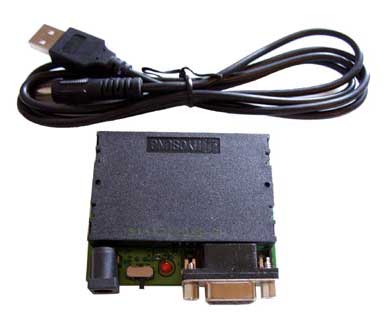
Titaniumcard 1 + 2
OposCard
M-2Card
Knotcard 1 + 2
Platinum Card
TitanCard 2.0
DragonLoaderCard







